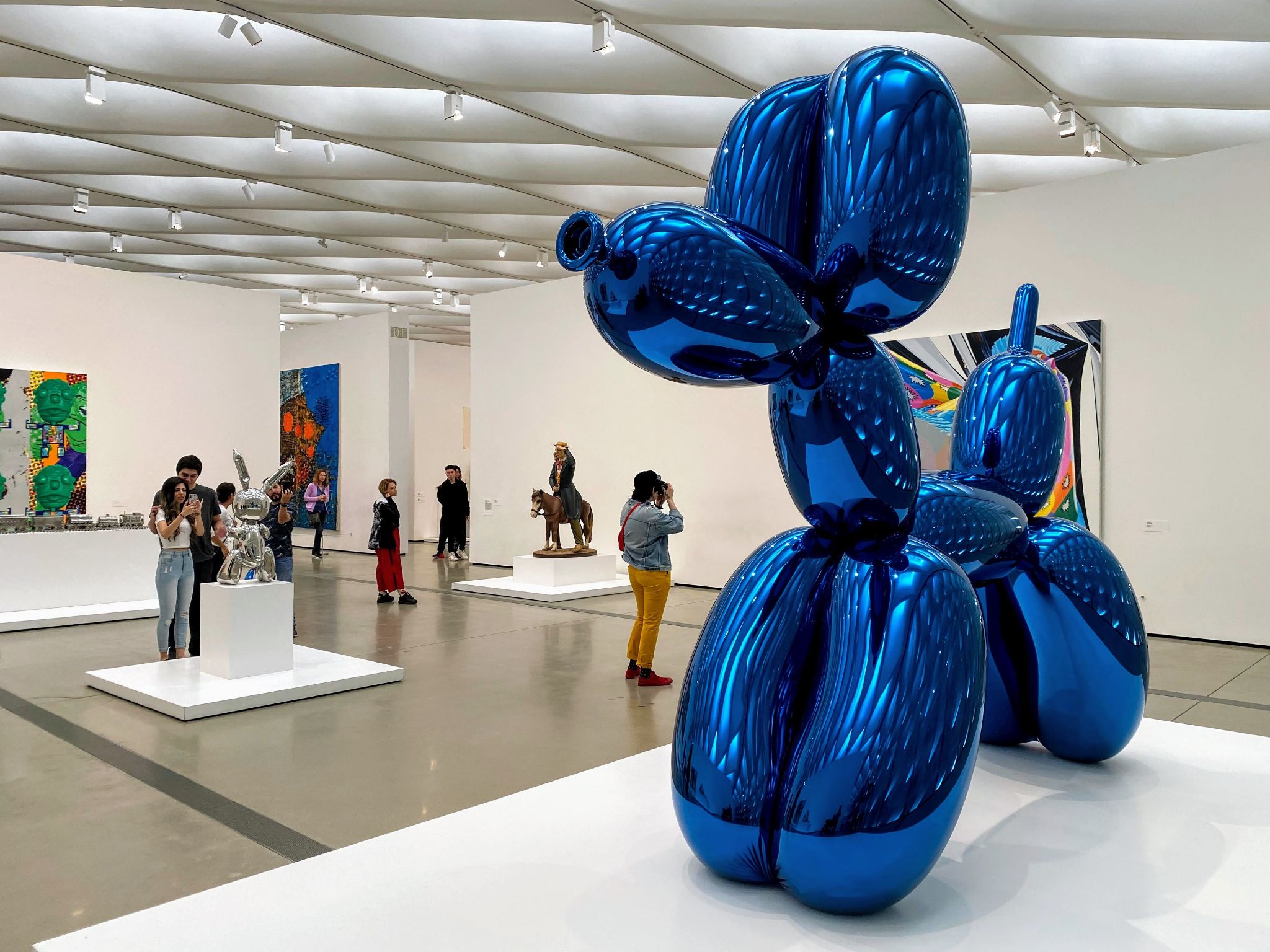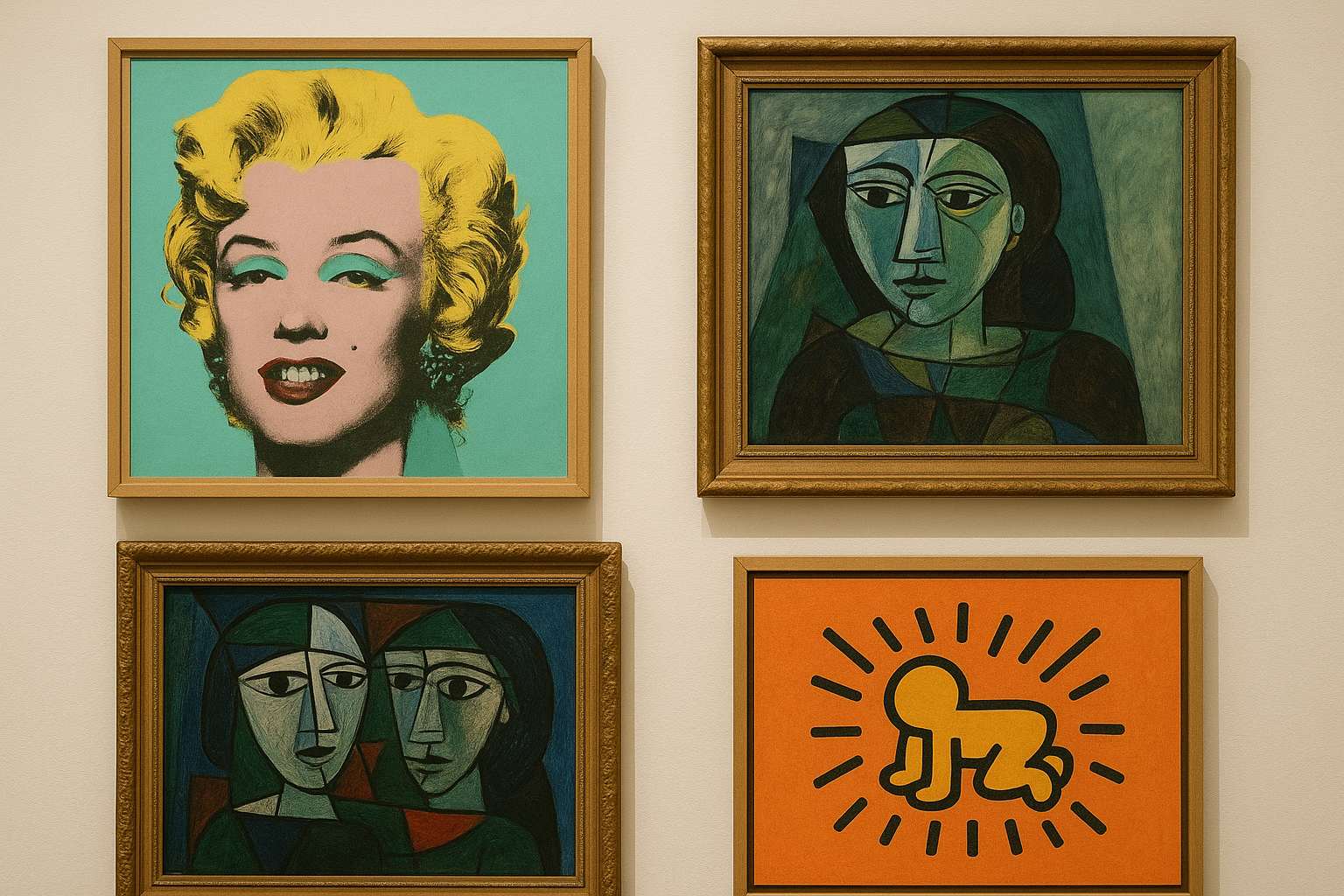The Undeniable Blue: Exploring the History and Present of Blue-Chip Art
June 16, 2025
The Undeniable Blue: Exploring the History and Present of Blue-Chip Art
In the high-stakes world of art, certain names and artworks transcend trends and economic fluctuations.
They become benchmarks of value, symbols of cultural significance, and coveted assets for collectors worldwide. This is the realm of blue-chip art. Borrowing its moniker from the most valuable chips in poker and the reliable stocks of established companies, blue-chip art represents the apex of artistic achievement and market desirability.
A Historical Perspective: The Making of a Blue-Chip
The concept of “blue-chip” in the art world isn’t a rigidly defined historical movement but rather an evolving recognition of artists whose work has consistently demonstrated enduring quality, critical acclaim, and strong market performance over decades, sometimes even centuries.

Blue Ballon Dog sculpture by Jeff Koons
Historically, the artists who have achieved blue-chip status often:
Pioneered Movements And Redefined Artistic Landscapes: Think of the revolutionary Cubism of Pablo Picasso, the groundbreaking Pop Art of Andy Warhol, or the timeless Impressionism of Claude Monet. These artists weren’t just creating art; they were shaping the course of art history.
Garnered Significant Institutional Recognition: Their works are prominently featured in major museums globally, solidifying their cultural importance and historical significance. Inclusion in prestigious collections acts as a powerful validation of their artistic merit.
Established A Consistent And Robust Auction Record: Blue-chip artists consistently command high prices at auction, with their works often fetching millions, sometimes even hundreds of millions of dollars. This strong market demand is a key indicator of their blue-chip status.
Possess A Well-documented Provenance And Authenticity: The history of ownership and exhibition of their artworks is meticulously recorded, adding to their credibility and investment appeal.
Created Relatively Scarce And Highly Sought-after Works: The limited availability of their most significant pieces further drives their value in the market.
Early examples of artists who would retrospectively be considered blue-chip include Old Masters like Leonardo da Vinci, Michelangelo, and Rembrandt, whose technical skill and cultural influence have stood the test of time. The rise of modern art markets in the 20th century saw the emergence of artists like Picasso, Monet, Van Gogh, and later Warhol and Basquiat, who established their dominance through innovation and market success.
Blue-Chip Art Today: A Market of Stability and High Stakes
In the 21st century, the definition of blue-chip art continues to evolve, with contemporary artists increasingly entering this prestigious category. Today, blue-chip art is characterized by:
Enduring Market Demand: Works by blue-chip artists remain highly sought after by institutional buyers, private collectors, and increasingly, as alternative investments.

Proven Track Record Of Appreciation: Historically, blue-chip art has shown a strong tendency to appreciate in value over the long term, often outperforming traditional financial markets, making it an attractive asset for diversification.
Global Recognition And Influence: Blue-chip artists are household names within and often beyond the art world, their work instantly recognizable and culturally significant on a global scale.
Continued Institutional Support: Major museums and cultural authorities continue to acquire, exhibit, and research the work of blue-chip artists, reinforcing their importance.
High Price Points: Blue-chip artworks consistently achieve top prices at auction, often setting new records.
Contemporary artists like Yayoi Kusama, Jeff Koons, Damien Hirst, George Condo, and even street artists like Banksy have, through consistent market performance, institutional recognition, and cultural impact, attained blue-chip status.
Investing in the Undeniable
The blue-chip art market, while selective and often requiring significant capital, is seen as a relatively stable segment within the broader art market. It offers collectors both the aesthetic pleasure of owning historically significant masterpieces and the potential for long-term financial returns. However, it’s crucial to remember that even blue-chip art is subject to market fluctuations, and thorough research, due diligence, and expert advice are essential for any art acquisition.
Blue-chip art represents more than just expensive paintings or sculptures. It embodies artistic excellence, cultural significance, and a legacy that continues to shape our understanding of art history. As the art world evolves, the roster of blue-chip artists may expand, but the fundamental principles of enduring quality, critical acclaim, and market strength will undoubtedly continue to define this elite echelon of artistic achievement.
Copyright © 2025 TheBirdwing. All Rights Reserved.
